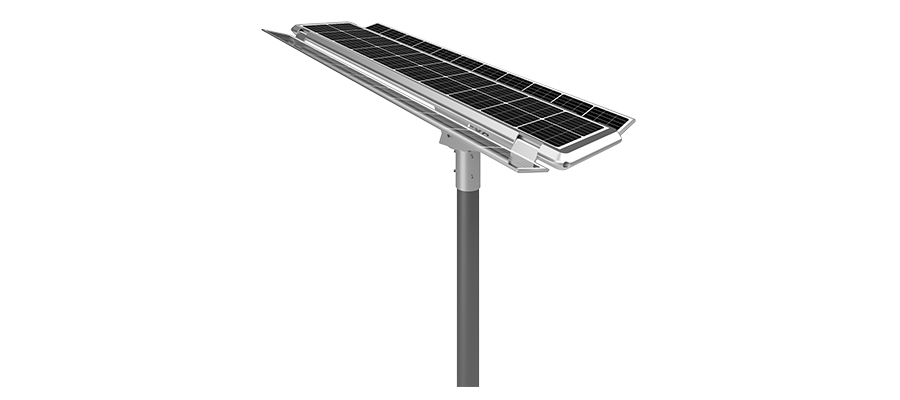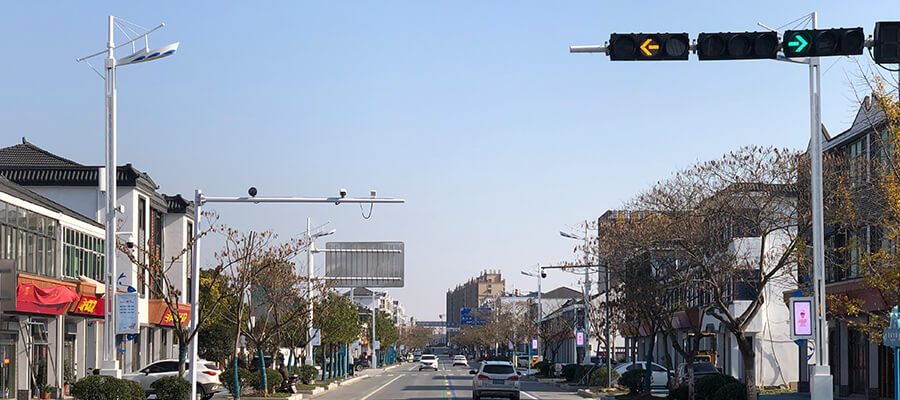How to Choose Solar Panel for Solar Power Street Light?
2021-06-17
VIEW "1763
Solar power street lights provide illumination for both city and rural areas. It’s a great invention for outdoor road lighting, which solve the energy shortage. Solar power is energy-saving and inexhaustible. The lifespan of the solar battery greatly affects the lifespan of the solar power street lights. But in addition to batteries, the performance of solar panels also determines the charging capacity of solar power street lights. Solar panels, also known as "solar chips" or "photocells" and "solar cells", are photoelectric semiconductor sheets that use solar light to directly generate electricity. A device that directly converts light energy into electrical energy through the photoelectric effect or photochemical effect. In physics, it is called photovoltaic (Photovoltaic, abbreviated as PV), or photovoltaic for short. Choosing cost-effective solar panels matters a lot. We have summarized the following points and tell you how to choose solar panels purchsing solar power street lights.
1. Choose the right type of solar panel
There are many types of solar panels, which can be divided into monocrystalline silicon, polycrystalline silicon, and amorphous silicon/thin film batteries. Monocrystalline silicon solar panels have high efficiency, generally 18-23%, and low light attenuation, but they are expensive. The lifespan of monocrystalline silicon solar panels is generally more than 25 years. The efficiency of polycrystalline silicon solar panels is relatively low, generally 17-18.5%, but the price is cheaper than that of monocrystalline silicon cells. The conversion efficiency of amorphous silicon cells is the lowest, generally 6-8%, and the production cost is also very low.
2. Dimensions of the solar panel
There are many sizes of solar panels. For the same power, it is more appropriate to choose a smaller size. The power of the solar panel is proportional to the area of the solar wafer. The area of the solar cell wafer is not completely equal to the area of the solar packaging panel. Because some solar panels are large, the gaps between single solar wafers are very wide, and the power of such solar panels is not necessarily high.

3. Durability
Complex outdoor environment and severe weather such as hail, rain and snow must be considered when designing solar street light systems. If solar panels want to guarantee a lifespan of more than 25 years, they must use high-quality and good materials. But not all solar power street light manufacturers will use high-quality solar panels. When purchasing solar panels, we must carefully check some places.
Check the surface of the tempered glass, in order to increase a certain production speed, small manufacturers often inadvertently drip the silicone on the tempered glass. The initial stage may not be obvious. But unclear things will affect the normal operating efficiency of the battery panel.
Check the battery piece. When it is spliced, use broken splicing. This method will cause the dragon chair to be disconnected during use, which will affect the overall efficiency.
Check the back to see if there are bubbles and other phenomena on the back.
Check whether the silica gel on the four sides is uniform and penetrated.
Check the frame to see if the strength of the frame is even and the tightness is different.
Check the welding to see if there is any missing. See if the battery is regular.
See if the junction box is tight, choose and transfer freely.
4. Choose the voltage and power of the solar panel
The working voltage of the solar cell is about 1.5 times of the battery voltage to ensure the normal charging of the battery. For example, 8~9V solar cells are needed to charge 6v storage batteries, and 15~18V solar cells are needed to charge 12V storage batteries. 33~36V solar cells are needed to charge the 24V battery.

In order to support the lighting of solar power street lights without charging on cloudy and rainy days, the daily charging energy of solar panels must be greater than the daily discharging energy. The excess power is stored in the battery and can be used in cloudy and rainy days. The power generated by the solar panel = the power of the solar panel divided by the voltage of the solar panel. Assume that the power of the solar panel is 25W and the voltage is 18V. The required lighting time is 5 hours, so the power generation of the solar panel is equal to 100W/18V=1.3A*5h=6.9Ah. The discharge capacity of the solar panel is equal to the power of the LED light source multiplied by the local sunshine time. Assume that the wattage of the lamp is 20W, the voltage is 12.8V, and the sunshine time is 5 hours. The discharge capacity of solar panels in a day is 10W*5h=50Wh. Then use 50Wh/12.8V=3.9Ah. It is reasonable that the power generation capacity of the solar panel is greater than the discharge capacity.

